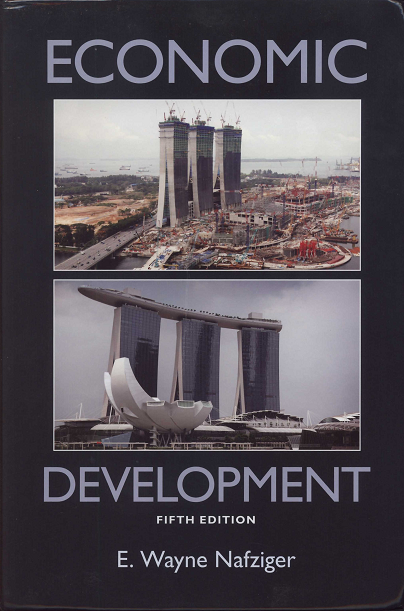John Weeks, School of Oriental and African Studies, University of London, states: “Now in its fifth edition, Nafziger’s Economic Development had gone from the best in the field to the classic in the field, the most comprehensive statement and analysis of major issues of development. It is essential for students in both economics and development studies, and an invaluable aid to instructors. Indeed, every person who wishes to be well-informed about the inequalities among countries should read the third chapter, “Economic Development in Historical Perspective.” Lloyd J. Dumas, University of Texas at Dallas indicates that “The latest edition of this first-rate text updates the copious illustrative data contained in its clear and extraordinarily comprehensive treatment of the character and problems of development. . . .It is filled with valuable references to the literature and helpful websites that serve as a guide for deeper investigation of the key issues.” For Howard Stein, University of Michigan, Ann Arbor, “Professor Nafziger’s Economic Development is one of few texts that draw on theory, history, policy, and institutional analysis of the complexity of the development process and why the goals of development continue to remain so elusive for so many.” Christopher Cramer, SOAS, University of London, says that “rather than applying a body of theory to the problems of developing economies, this is a textbook the begins from the diverse, uneven reality of developing countries and explores how economics have been applied, what debates have emerged, and what policy relevance these debates have. Clearly written and briskly paced, its particular value emerges by using the text in combination with the Internet resources and bibliographic support the book provides.” John Loxley, University of Manitoba, thinks Economic Development is the most comprehensive text available on the subject, . . . written in a clear, lively, and readable fashion that makes it very accessible to students. It deals impressively with theory, policy, and institutional issues in the best traditions of political economy and draws intelligently on concrete country studies.”
“An excellent and wide-ranging textbook on development,” according to Anwar Shaikh, New School for Social Research, New York. He continues: “The author’s expertise and fair-mindedness are evident.”
Part I. Principles and Concepts of Development: 1. How the other two-thirds live; 2. What is Economic Development?; 3. Economic development in historical perspective; 4. Characteristics and institutions of developing countries; 5. Theories of economic development; Part II. Poverty Alleviation and Income Distribution: 6. Poverty, malnutrition, and income inequality; 7. Rural poverty and agricultural transformation; Part III. Factors of Growth: 8. Population and development; 9. Employment, migration and urbanization; 10. Education, health, and human capital; 11. Capital formation, investment choice, information technology, and technical progress; 12. Entrepreneurship, organization, and innovation; 13. Is Economic Growth Sustainable? Natural Resources and the Environment; Part IV. The Macroeconomics and International Economics of Development: 14. Monetary, fiscal, and incomes policy, and inflation; 15. Balance of payments, aid, and foreign investment; 16. The external debt and financial crises; 17. International trade; Part V. Development Strategies: 18. The transition to liberalization and economic reform: Eastern Europe, the Former Soviet Union, and China; 19. Stabilization, adjustment, and reform, and privatization
